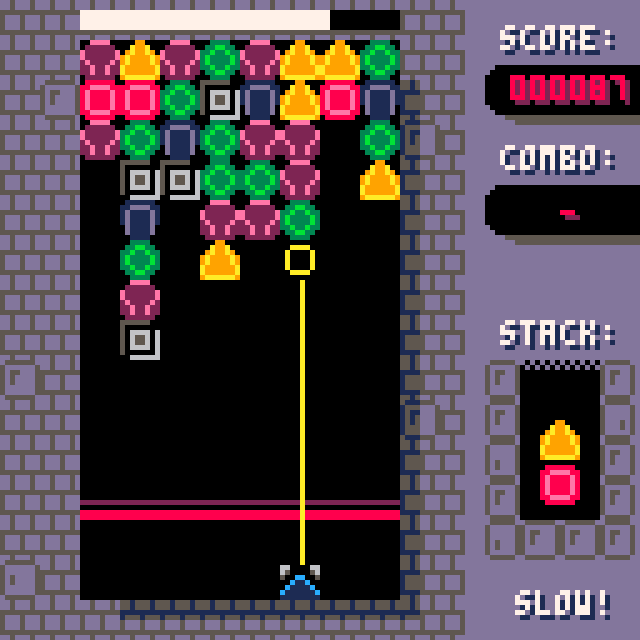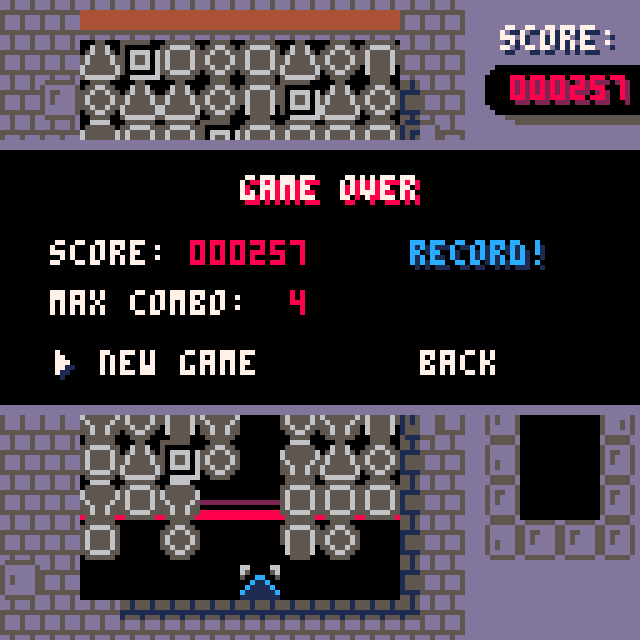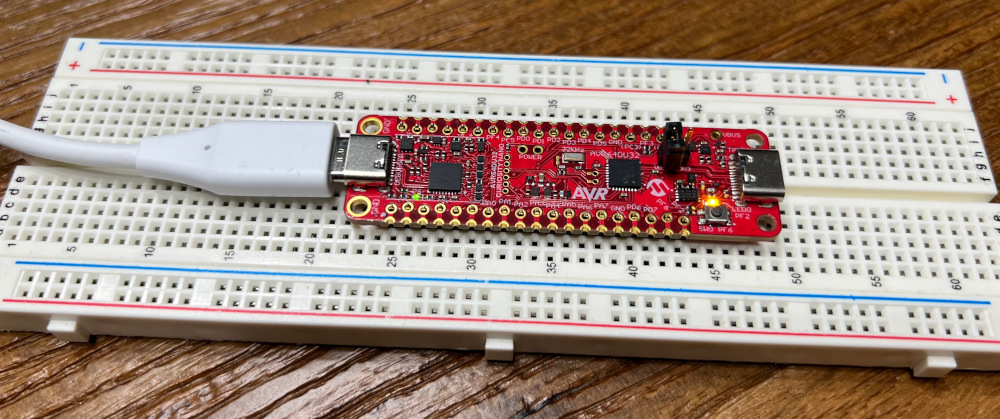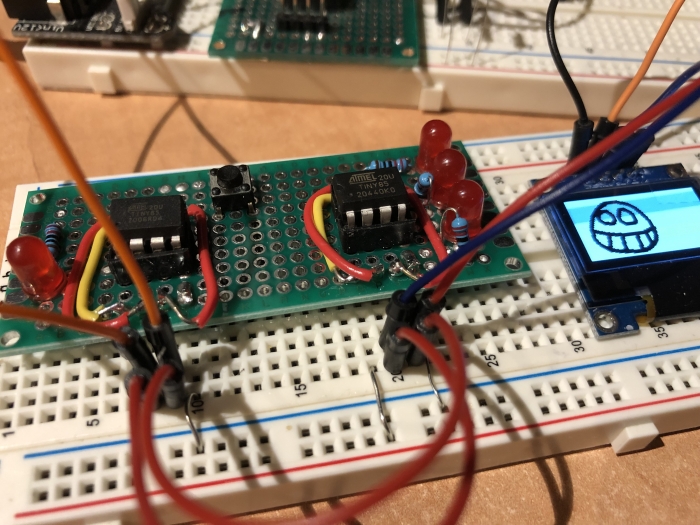Posts
-
STAKBLOK, a game about destroying blocks
I’ve just released a puzzle game for the pico-8 fantasy console called STAKBLOK!
A classic arcade game about destroying blocks on a neverending grid while storing them on a stack.
Written on LUA (or the LUA-variant used by pico-8, which I think it’s kinda close to the “original” one - my only approach to the language is on this specific console) in a few days, STAKBLOK implements classic block-game mechanics (as seen on titles like Columns or Magical Drop) with a “quick plays during office breaks” spirit.
Hope you like it!
It’s web-based and available on the following sites:
- Here! Self-hosted on my site
- On the pico-8 bbs, the “official directory”
- On my itch.io page
The game supports both keyboard and touchscreen controls, with some key-mapping changes depending on the device you open the website with.




-
AVR Dx First Steps (with Curiosity Nano)
Few weeks ago a friend of mine gave me an AVR64DU32 Curiosity Board (an evaluation/tinkering board with one of the new AVR Dx micros on it) to start poking around.
Here’s how I set up a basic environment to work with my usual toolchain (avr-libc, avr-gcc and avrdude).

-
Analog Phone Dialer


Few months ago I got one of those old analog dial-based phones (the ones with the “rotary thing” that uses a pulse dialing technique to transmit the numbers across the phone line).
After some cleaning and minors fixes (like replacing a broken microphone) it became fully functional again, except for the fact that I could recieve< calls but I couldn’t make them…
The reason wasn’t a broken device but it’s own old pulse dialing tech (remember that nowadays everything goes under Dual-Tone Multi-Frequency signaling).
Even if most of the main modern phone lines still support pulse dialing (not actually sure how consistent this compatibility is), the average domestic optical fiber router doesn’t. Therefore, even if I could dial up to some destination, chances are the receiver wouldn’t even support my ancient dialing method, so if we were dealing with one of those answering machines “press 1 for whatever option”<) it would became useless again.
There are some workarounds over this problem out there, but I decided to go with my own AVR-based solution: an atmega48p capturing the rotary dial pulses and generating the proper DTMF tones using a DAC converter made with a R-2R resistors ladder.
-
I2C libraries for attiny85-like AVR micros

A pair of I2C libraries for AVR micros with USI two-wire mode capabilities (developed and tested on attiny85’s, but portable - in theory! - to similar devices with the proper pin changes) + a bunch of examples both with primary and secondary devices.
-
Clickhouse Cityhash PHP extension
I wrote a PHP extension implementing the custom Cityhash algorithm found on Clickhouse DBMS (needed that for some work-related projects, then published here).
Check the Github repo for more info, source code and links.
